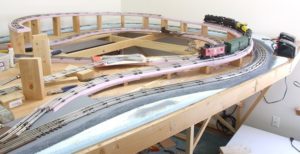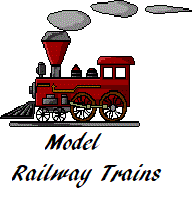What is Track Grade?
The world is not flat, and to build a good-looking model railway your track should also not be flat, so grades are a part of any model railway. The track grade is the slope of a railway track and is expressed as the percentage of its rise for the length of its run. For example, 0.635m (25”) of track rise 25mm (1”) the grade is 4%.
How is track Grade Calculated?
The grade is measured by the amount of height gained (rise) divided by a given distance (run).

The formula to determine track grade is:
% grade = rise/run (% = rise divided by run)
or
rise = run x %grade (rise = run by % grade)
or
run = rise/%grade (run = rise divided by % grade)
What Grade can a Model Train Climb?
 The simple answer for model trains is 2% grade, which is a 25mm (1”) rise for every 1.22m (4’) of the run. Model trains can handle a steeper grade if required, a 3% grade or even a 4% grade depending on a helper engine. Another method is to use a ‘ghost car’, which is a motorized freight car that can be positioned somewhere near the centre of a long train.
The simple answer for model trains is 2% grade, which is a 25mm (1”) rise for every 1.22m (4’) of the run. Model trains can handle a steeper grade if required, a 3% grade or even a 4% grade depending on a helper engine. Another method is to use a ‘ghost car’, which is a motorized freight car that can be positioned somewhere near the centre of a long train.
The maximum grade you can use is determined by three things –
- The power of your engine
- The weight of your engine
- The number and weight of your car
The greater the weight the greater the traction, so larger-scale engines may handle steeper grades than smaller-scale engines.
